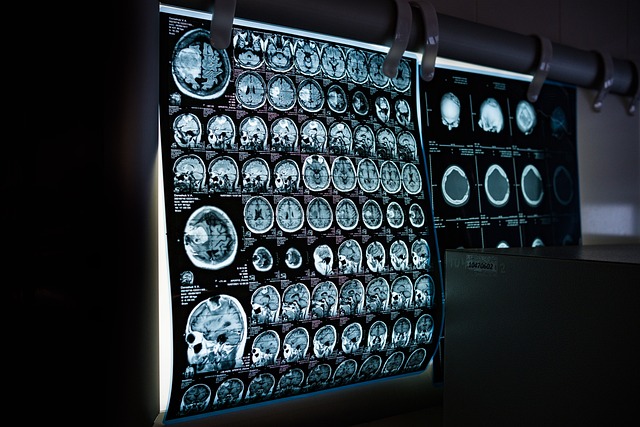Evidence-based conservative approaches for managing spinal curvature
Scoliosis, an atypical lateral curve of the spine, is commonly detected during childhood or adolescence and monitored through clinical assessment and imaging. Conservative management focuses on slowing progression, preserving function, and reducing symptoms without spinal fusion. This article outlines evidence-based non-surgical strategies clinicians and families consider for spinal curve care.

This article is for informational purposes only and should not be considered medical advice. Please consult a qualified healthcare professional for personalized guidance and treatment.
How is scoliosis diagnosed and what imaging is used?
Diagnosis begins with a clinical spine examination that evaluates posture, shoulder and pelvic symmetry, and the presence of a rib hump during forward bending. When a structural curve is suspected, standing radiographs are the standard imaging method to measure curve magnitude (Cobb angle) and track progression over time. In some cases, low-dose EOS imaging or MRI is used to further evaluate vertebral anatomy or neurologic concerns. Accurate diagnosis and periodic imaging guide whether conservative care is appropriate or if more intensive monitoring is required.
When is conservative care preferred over surgery or fusion?
Conservative approaches are typically considered for curves that are mild to moderate in magnitude, especially in skeletally immature patients where progression risk is present. The clinical decision balances the curve size, growth potential, symptoms, and impact on function. Evidence supports non-surgical pathways for many pediatric and adolescent patients to delay or avoid fusion, reserving surgery for progressive curves that threaten respiratory function, cause significant pain, or exceed established thresholds despite conservative measures.
What role do bracing and posture correction play?
Bracing is a primary conservative intervention aimed at halting curve progression during rapid growth. Modern thoracolumbosacral orthoses are custom-fitted to apply corrective forces while permitting activity. Effectiveness depends on prescribed wear time, fit, and adherence. Posture-focused strategies complement bracing by promoting spinal alignment, muscular balance, and awareness during daily activities. Clinicians monitor both objective imaging changes and functional outcomes to evaluate the combined impact of bracing and posture training.
How does physiotherapy and exercise support rehabilitation?
Physiotherapy programs emphasize targeted exercise, neuromuscular re-education, and functional rehabilitation to improve trunk control, core strength, and flexibility. Methods such as scoliosis-specific exercise protocols aim to reduce asymmetrical loading and improve posture. Regular, supervised exercise can support respiratory mechanics and reduce discomfort, though exercise alone is less likely to stop progression in rapidly growing patients compared with bracing. Interdisciplinary rehabilitation often integrates manual therapy, therapeutic exercise, and activity modification to address individual needs.
Considerations in pediatric and adolescent patients
Pediatric and adolescent management hinges on growth stage, curve behavior, and psychosocial factors. Growth remaining is a strong predictor of progression risk; therefore, regular evaluation is essential. Conservative care for younger patients may be prolonged and requires family education to support adherence to bracing and exercise programs. Attention to school participation, body image, and mental health improves overall outcomes. Coordination among pediatric orthopedics, physiotherapy, and school-based supports helps tailor safe activity levels while monitoring the spine curve.
How orthopedics coordinate long-term conservative management
Orthopedics specialists lead diagnosis and treatment planning, integrating imaging, growth assessment, and patient goals. Long-term conservative management typically involves scheduled follow-ups, serial radiographs, and interdisciplinary input from physiotherapists and orthotists. When conservative measures show inadequate curve control or functional decline, orthopedics reassess the indication for surgical options such as fusion. The goal of coordinated care is to apply evidence-based interventions at appropriate times to preserve mobility and minimize surgical exposure.
Practical guidance on monitoring, activity, and expectations
Regular monitoring with clinically indicated intervals of imaging and functional assessments ensures timely adjustment of conservative strategies. Most patients can continue age-appropriate physical activity; contact sports or high-impact loading may be modified based on individual risk. Expectations should be realistic: conservative approaches aim to slow progression, reduce symptoms, and maintain function rather than guarantee complete curve reversal. Shared decision-making supported by clear data and follow-up promotes adherence and better outcomes.
Conclusion
Conservative management of spinal curvature combines accurate diagnosis, targeted bracing, posture correction, physiotherapy, and coordinated orthopedics oversight to reduce progression risk and preserve function. For pediatric and adolescent patients, growth status and adherence are central to success. Ongoing monitoring and individualized plans allow clinicians and families to balance activity, rehabilitation, and the potential need for surgical referral over time.






